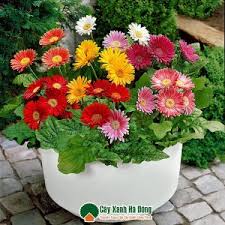**Marigolds and Creating Eco-Friendly Living Spaces: Nurturing Nature Indoors**

In the pursuit of sustainable living, marigold flowers emerge as beacons of environmental consciousness and inspiration, offering valuable insights and beauty for the creation of eco-friendly living spaces. With their vibrant colors, natural fragrance, and air-purifying properties, marigolds play a significant role in fostering harmony between human habitats and the natural world. Let’s explore the intricate relationship between marigolds and eco-friendly living spaces, uncovering their potential to cultivate a healthier, more sustainable environment indoors.
**1. Eco-Friendly Living: A Path to Sustainability**
Eco-friendly living embraces principles of environmental responsibility, resource conservation, and health-consciousness in the design, construction, and operation of residential and commercial spaces. By incorporating sustainable materials, energy-efficient technologies, and biophilic design elements, eco-friendly living spaces aim to minimize ecological footprints, enhance indoor air quality, and promote human well-being while reducing impacts on the planet’s finite resources and ecosystems.
**2. Indoor Air Quality Improvement with Marigolds**
Marigolds offer natural air-purifying properties that can contribute to improving indoor air quality and creating healthier living environments. Studies have shown that certain plant species, including marigolds, have the ability to remove harmful pollutants such as formaldehyde, benzene, and xylene from indoor air through a process known as phytoremediation. By placing marigolds strategically throughout indoor spaces, homeowners and occupants can enhance air filtration and reduce exposure to indoor air pollutants, leading to cleaner, fresher air and improved respiratory health.
**3. Biophilic Design and Connection to Nature**
Marigolds inspire biophilic design principles that emphasize the integration of natural elements, patterns, and processes into the built environment to enhance human health, well-being, and productivity. By incorporating living plants, natural materials, and daylighting strategies, biophilic design seeks to foster a sense of connection to nature, reduce stress, and promote psychological restoration for occupants of indoor spaces. Marigolds, with their vibrant blooms and soothing fragrance, contribute to biophilic design concepts by bringing elements of the outdoors inside, creating visually appealing and emotionally uplifting environments that support human flourishing.
**4. Sustainable Gardening and Urban Farming**
Marigolds are well-suited for sustainable gardening and urban farming practices that enable individuals and communities to grow their own food, reduce food miles, and reconnect with the source of their sustenance. In indoor gardens, balconies, and rooftop farms, marigolds can be cultivated alongside edible crops, herbs, and vegetables, providing pest control, pollination support, and aesthetic beauty. By practicing sustainable gardening techniques such as composting, rainwater harvesting, and organic pest management, urban gardeners can minimize environmental impacts, conserve water, and promote biodiversity in urban landscapes.
**5. Green Building Certification and Standards**
Marigolds align with green building certification programs and standards that recognize the importance of indoor plants and biophilic design elements in promoting occupant health, comfort, and productivity. Green building rating systems such as LEED (Leadership in Energy and Environmental Design) and WELL Building Standard prioritize indoor air quality, natural daylighting, and access to green spaces as key criteria for sustainable building design and operation. By incorporating marigolds into indoor environments, building owners and developers can enhance the environmental performance and occupant satisfaction of their projects while demonstrating a commitment to sustainability and human well-being.
**6. Community Engagement and Education**
In conclusion, marigolds and eco-friendly living spaces embody a shared vision of sustainability, health, and harmony between humans and nature. By embracing the beauty and benefits of marigolds in indoor environments, individuals, families, and communities can create healthier, more vibrant living spaces that support ecological resilience, foster well-being, and inspire a deeper connection to the natural world. Through community engagement, education, and advocacy, we can cultivate a culture of environmental stewardship and sustainable living that transcends individual spaces and contributes to a more resilient, regenerative future for all.